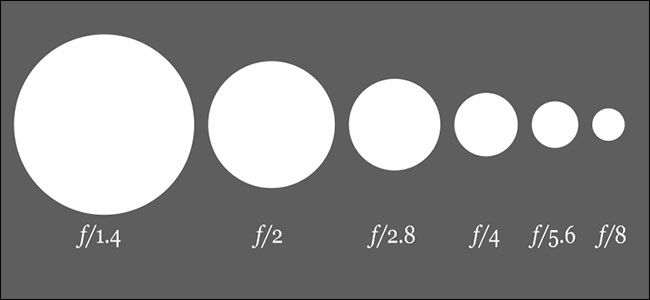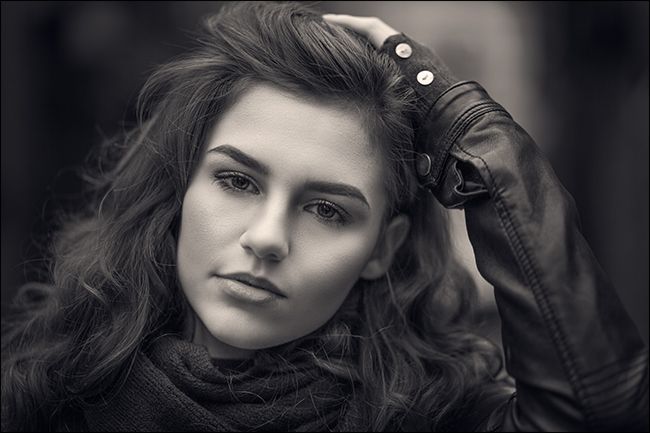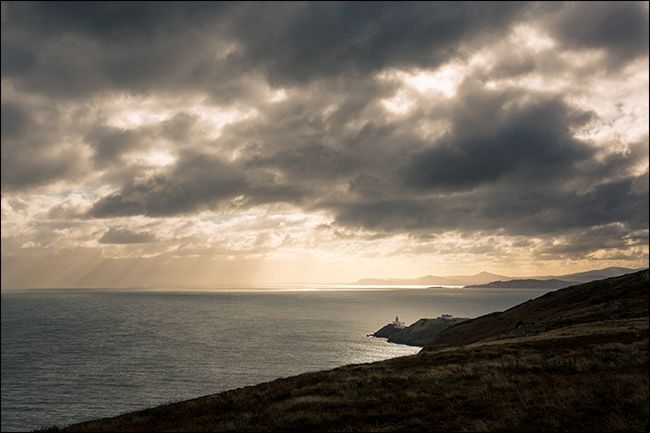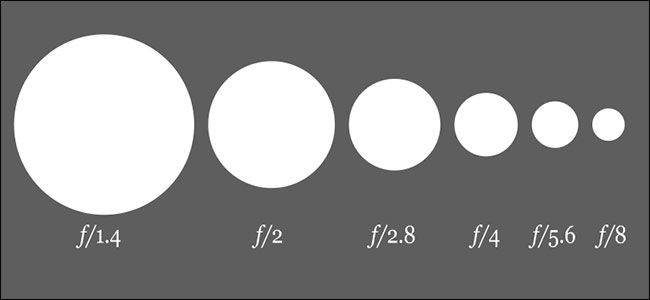In photography, the aperture is the hole in a lens that lets light into your camera.
When you take a photo, the shutter inside your camera swings up and lets light hit the sensor. How much light hits the sensor is determined by two things: how long the shutter is open for and how big a hole—the aperture—the light has to get through. The more light that hits the sensor, the brighter the image. We’ve already looked at shutter speed, so let’s explore the aperture.
How Aperture Works
Imagine trying to fill a bucket of water in a rainstorm. The aperture is the size of the hole at the top of the bucket. If you’ve got three different buckets, each with the same capacity but a different sized hole, then the one with the biggest hole will fill up fastest. This is the same as what happens when you take a photo.
If the aperture is really big, loads of light pours through, and you don’t have to hold the proverbial bucket out in the rain for long (which means you can use a faster shutter speed). If the aperture is really small, a lot less light squeezes in, so you’re stuck standing around in the rain for a lot longer.
So why then, don’t we always use a really big aperture? Because the aperture also affects other parts of the image, too. When rain falls into the bucket through a really big hole, it’s splashing in from all directions. Some of the rain drops will be blown in by the wind, some might be dripping off a tree, and so on. When rain falls into a bucket through a really narrow hole, it can only come in from one angle: if it’s blown around by the wind, it’s going to miss the bucket or hit the edge.
The same is true for light: with a really big aperture, a lot of light gets let in, but it comes in from different directions—in physics speak, it’s uncollimated. With a really narrow aperture, only light that comes in at a very specific angle gets through the hole so all the light is coming from the exact same direction—it’s collimated. The collimation of the light determines the depth of field of your photo. And this is the crux of it.
Look at the photo above. Only the model is in focus. Everything else behind her is blurry. This means it has a really shallow depth of field. The area that’s sharp is tiny. I took this photo with a wide aperture so light poured in from all directions. A lot of it wasn’t focused properly when it hit the sensor; only the light bouncing directly off the model was coming in at the right angle.
Now, in this photo, everything is sharp and in focus. It’s got a really big depth of field. This is because I used a narrow aperture. Even though light was coming from all sorts of different directions, only light from a specific angle was able to get through the small hole. Since all the light is coming in from the same direction, it hits the sensor in the same way: perfectly in focus.
How Aperture is Measured
Shutter speed is simple to measure: it’s done in seconds or fractions of a second. Aperture is a little harder to measure because the size of the hole is only one part of the equation: what matters is how big the hole is relative to the focal length of the lens.
Think of it this way: if you’ve got a meter-high bucket and the hole at the top is 10 centimeters wide, then that’s a pretty narrow aperture (at least relative to our bucket). On the other hand, if you’ve got a bucket that’s 10 centimeters high with a 10 centimeter wide hole, then that’s (again, relative to our bucket) a pretty wide aperture. Knowing that the hole is 10 centimeters wide doesn’t tell us very much on its own.
Aperture, then, is measured in f-stops. This is just the ratio between the focal length, how tall the bucket is, and the aperture. Most lenses you can buy have a range of f-stops between about f/1.8 and f/22. This means the ratio of the focal length (f) to the aperture is between 1.8 and 22.
If you do the math, it’s easy to see that a low f-number is a wider aperture. For example, if you use a lens with a 100mm focal length, then at f/1.8 the aperture is about 55mm wide (100/1.8). On the other hand, at f/22 the aperture is about 4.55mm wide (100/22).
With aperture, we don’t actually need to know exactly how many millimeters wide the hole is. All that matters is the f-number. That’s because, thanks to some fairly complex math, the ratio of the aperture to the focal length has consistent properties regardless of what the focal length of the lens actually is. An aperture of f/1.8 acts the same whether you’re using a 100mm lens or a 1000mm lens.
What Aperture Should You Use?
Aperture is incredibly important in photography. If you want to take good photos, you need to know how to choose the right aperture. It’s also important to understand how it interacts with the two other important camera settings: shutter speed and ISO. Check out our guide to shutter speed, aperture and ISO for everything you need to know.
Image Credits: Cbuckley/Wikimedia.




